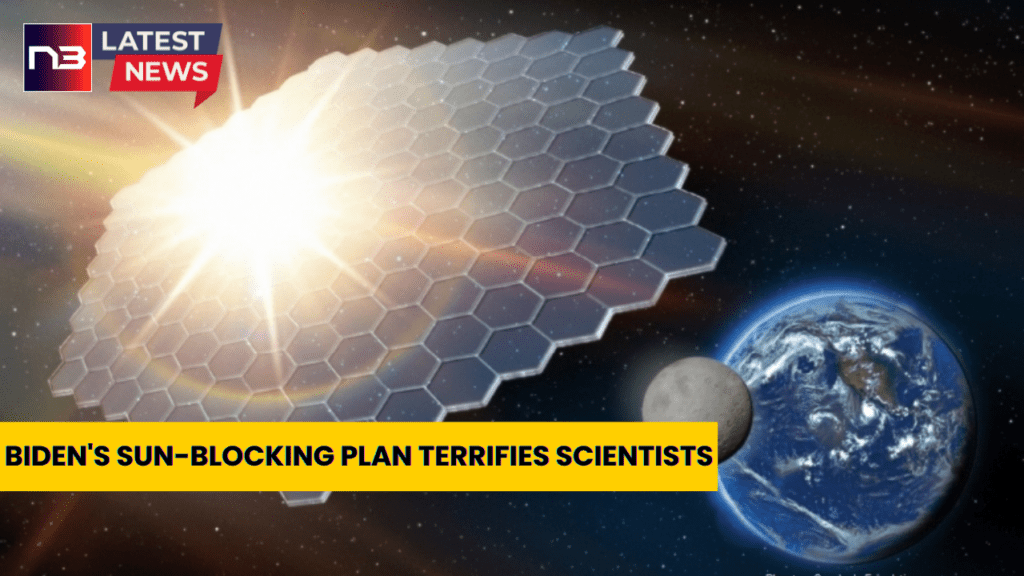Prepare for a terrifying glimpse into the Biden administration’s dystopian vision for our planet. As concerns about climate change reach fever pitch, President Biden endorses a shocking proposal to block the sun itself! Is this desperate measure our last hope or a recipe for disaster? Brace yourselves for a chilling journey into the dark side of climate politics.
In a stunning turn of events, the White House released a report that has sent shockwaves through the scientific community and beyond. The proposal of solar radiation modification (SRM) as a means to tackle global warming has raised eyebrows and generated intense debate. While the administration stressed that no definitive decisions have been made regarding a “geoengineering” policy, the report offers a glimpse into a world where sunlight is artificially restricted.
The White House acknowledged the profound impact of climate change on our planet and human well-being. It emphasized that the effects of climate change will only worsen as greenhouse gas concentrations rise. In this context, the potential role of SRM in mitigating climate-related hardships is being explored. However, the report also sounded the alarm, warning of severe consequences if mismanaged.
One strategy proposed in the report involves increasing aerosol concentrations in the stratosphere. By doing so, solar radiation could be reflected away from the Earth’s surface, theoretically leading to cooling. Other alternatives include augmenting cloud coverage over oceans or reducing cirrus cloud formations that reflect solar radiation back to the planet. While these ideas may sound like science fiction, they are being seriously considered at the highest levels of government.
However, the risks associated with such interventions cannot be ignored. The report explicitly acknowledges the potential for significant disruptions in weather patterns, food supplies, biodiversity, geopolitics, and human health. Disturbingly, it warns of the possibility of abrupt warming if SRM measures are reversed, resulting in the Earth rapidly heating up once again.
Despite the inherent dangers, the Biden administration’s report suggests that SRM could offer a viable path to significantly cool the planet within a few years. Nonetheless, the administration clarified that there are currently no plans to establish a comprehensive research program focused on solar radiation modification.
Scientists remain divided on the potential benefits and risks of such an audacious plan. Some express grave concerns about the potential catastrophic changes to the Earth’s atmosphere that could arise from meddling with natural systems. However, others argue that SRM could serve as a desperate last resort if the worst predictions about climate change become reality in the coming decades.
Shuchi Talati, the executive director of the Alliance for Just Deliberation on Solar Geoengineering, emphasized the importance of the report’s existence. She stated, “The fact that this report even exists is probably the most consequential component of this release.” The acknowledgment of SRM as a potential solution indicates a radical shift in climate policy under the Biden administration.
This move aligns with President Biden’s broader agenda to prioritize climate issues across multiple sectors, including infrastructure and transportation. It stands in stark contrast to the previous administration, led by Donald Trump, who famously dismissed climate change as a hoax.
As the world grapples with the repercussions of climate change, President Biden’s support for a plan to block the sun raises more questions than answers. Will the risks outweigh the potential benefits? The road ahead is uncertain, but one thing is clear: the debate over SRM is just heating up.



